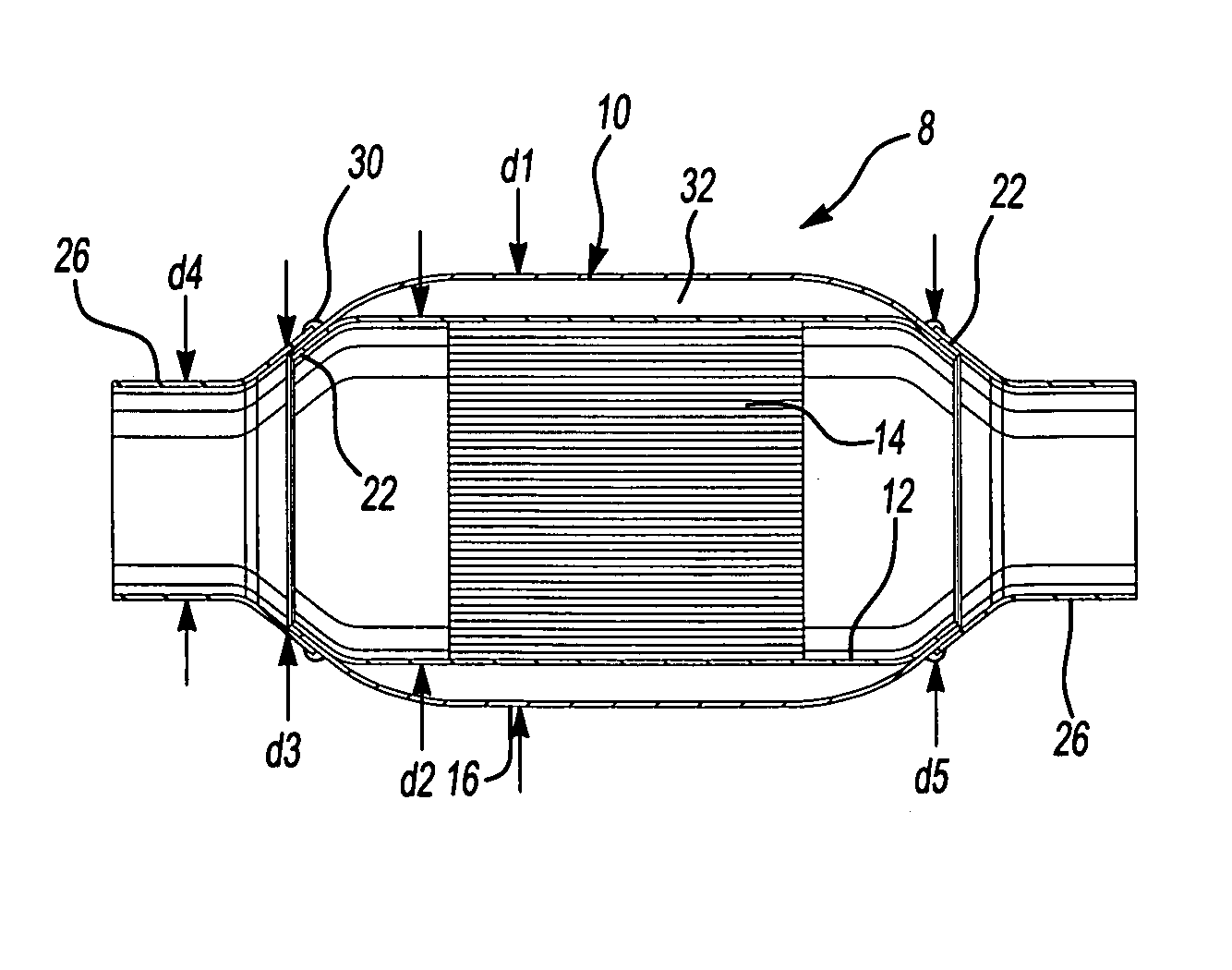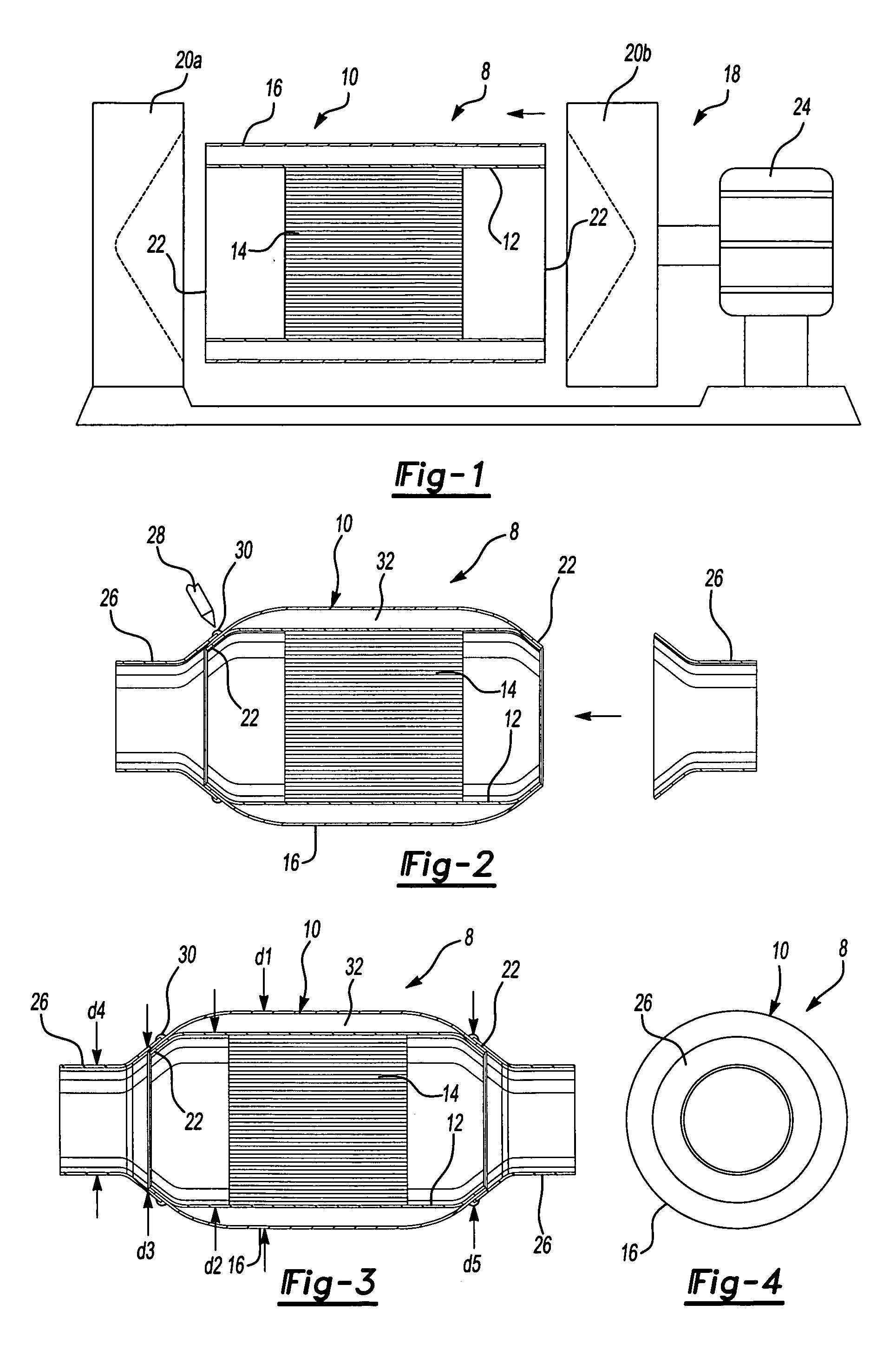Catalytic converter with integral heat shield device
a heat shield device and catalytic converter technology, applied in machines/engines, separation processes, other domestic objects, etc., can solve the problems of poor shielding and insulation, and the heat shield typically does not completely cover, so as to reduce harmful emissions
- Summary
- Abstract
- Description
- Claims
- Application Information
AI Technical Summary
Benefits of technology
Problems solved by technology
Method used
Image
Examples
Embodiment Construction
[0012] An example of the inventive manufacturing process for the catalytic converter of the present invention is schematically shown in FIG. 1. The catalytic converter 8 includes a center portion 10 having an inner liner 12 housing a catalyst or substrate 14. An outer liner 16 is arranged about the inner liner 12 so that there is space between the liners 12 and 16. The liners 12 and 16 preferably have a circular cross-section and are cylindrical in shape. Furthermore, it is preferable that the liners 12 and 16 are of approximately the same length.
[0013] The center portion 10 is arranged between opposing dies 20 of a forming machine 18. The dies 20 have a generally conical recess, but may be of any suitable shape, as will be appreciated by one of ordinary skill in the art. The dies 20 are moved towards one another to plastically deform opposing ends 22 of the center portion 10 inwardly. As the ends 22 are being deformed, the inner liner 12 becomes centered relative to the outer line...
PUM
| Property | Measurement | Unit |
|---|---|---|
| temperatures | aaaaa | aaaaa |
| shape | aaaaa | aaaaa |
| length | aaaaa | aaaaa |
Abstract
Description
Claims
Application Information
 Login to View More
Login to View More - R&D
- Intellectual Property
- Life Sciences
- Materials
- Tech Scout
- Unparalleled Data Quality
- Higher Quality Content
- 60% Fewer Hallucinations
Browse by: Latest US Patents, China's latest patents, Technical Efficacy Thesaurus, Application Domain, Technology Topic, Popular Technical Reports.
© 2025 PatSnap. All rights reserved.Legal|Privacy policy|Modern Slavery Act Transparency Statement|Sitemap|About US| Contact US: help@patsnap.com


